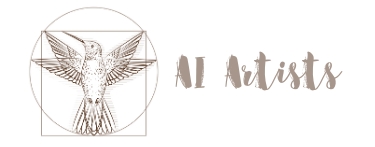LoRA (Low-Rank Adaptation) technology has become a game-changer in AI video generation. By offering precise customization, it allows creators to refine AI-generated videos with specific styles, animations, and motion sequences. This “how to use lora ai video generator” guide provides a step-by-step approach, complete with examples and practical tips, for using LoRA-enabled AI video generators.
What Is LoRA AI Video Generation?
LoRA works by adapting a pre-trained AI model to understand specific artistic styles, movements, or character designs. This customization is particularly useful for:
- Maintaining consistent visual aesthetics.
- Creating unique character animations.
- Applying reusable templates for brand identity or stylistic preferences.
Examples of LoRA in Action
1. Character Animation
Imagine creating a series of videos with a consistent character style:
- LoRA can ensure the character’s face, body proportions, and expressions remain consistent across all scenes.
- Example prompt: “A young adventurer walking through a magical forest, with glowing orbs lighting the path.”
2. Style Transfer
Apply a specific art style to your videos:
- Train LoRA to mimic the visual aesthetics of impressionist paintings or futuristic neon designs.
- Example: “A cyberpunk city with glowing skyscrapers and flying vehicles, inspired by neon art.”
3. Motion Control
Define specific movements:
- Create animations like a dancer performing fluid motions or a robot assembling parts.
- Example: “A robot assembling a mechanical device with smooth and precise movements in a sci-fi lab.”
Step-by-Step Guide to Using LoRA AI Video Generators
1. Choose Your Platform
Platforms like ComfyUI and others offer support for LoRA-based video generation. Select one that fits your needs and hardware capabilities.
2. Training Your LoRA (Optional)
If a pre-trained LoRA doesn’t meet your needs, train your own:

- Dataset Preparation: Use images or videos representing your desired style or motion.
- Training Configuration: Set parameters like resolution and output format.
- Run Training: Utilize GPUs for faster processing.
3. Upload and Select LoRA
- Upload your LoRA file to the platform.
- Navigate to the LoRA selection node and choose the file. Adjust its strength as needed for optimal results.
4. Configure Video Settings
Define essential parameters such as:
- Resolution: E.g., 1080p or 4K.
- Duration: Number of frames for video length.
- Style Strength: Fine-tune blending between LoRA customization and base model output.
5. Generate Your Video
Input a descriptive text prompt, such as:
- “A surreal underwater city with glowing jellyfish swimming above.”
Click “Generate” and review the result. Adjust settings if necessary and save the final video.
Expanded Workflow Explanation

- Initial Setup
- Install the necessary tools and software. For example, platforms like MimicPC or ComfyUI provide ready-to-use workflows, minimizing setup complexity.
- Ensure your hardware meets the requirements, such as a high-performance GPU (e.g., RTX 4000 series), for smoother video processing.
- LoRA Integration
- Navigate to the tool’s “LoRA Models” section.
- Upload a LoRA file—this can either be a pre-trained file from a platform like Civitai or a custom-trained LoRA tailored to your requirements.
- The integration process ensures that your video generator uses the fine-tuned LoRA data to apply consistent styles or animations.
- Video Settings Configuration
- Adjust video resolution, quality, and duration in the settings panel. These controls let you optimize the output for specific platforms or projects.
- Experiment with “Style Strength” and “Flow Shift” to define the artistic intensity and video pacing.
- Prompt Creation
- In the text prompt section, input detailed and specific descriptions of the scene, characters, or style you want to generate.
- For example, “A cyberpunk city at sunset, with flying cars and glowing neon lights.”
- Generate and Review
- Initiate the generation process. Depending on the complexity, it might take a few minutes to produce the video.
- Review the generated output for any adjustments or refinements. You can tweak the LoRA strength or prompts for desired changes.
- Export and Save
- Once satisfied with the video, export it in a suitable format for your project. Use these videos in creative, educational, or commercial contexts.
Suggestions for Creating a Video Workflow Demonstration
- Software Interface Walkthrough:
Record a screen-captured tutorial that shows the installation, setup, and integration of LoRA files in ComfyUI or another AI video tool. Highlight each step with on-screen captions. - Dynamic Scene Examples:
Showcase examples of generated videos using different LoRA configurations:- A time-lapse of a futuristic cityscape with changing lighting conditions.
- A fantasy-themed animation showing a magical forest with glowing orbs.
- Side-by-Side Comparisons:
Create clips comparing videos generated with and without LoRA integration to emphasize the enhanced quality and customization capabilities. - Custom Training Visuals:
Include animations or visuals of the LoRA training process—datasets being fed into the model, graphs depicting iterations, and resulting style improvements.
Practical Tips for LoRA Users
- Experiment with Prompts: Specific prompts yield better results.
- Combine LoRAs: Layer multiple LoRAs for complex effects, like blending characters with unique environments.
- Optimize Hardware: Use high-performance GPUs or cloud-based services for smooth rendering.
Applications of LoRA AI Video Generators
1. Creative Projects
- Artistic storytelling.
- Character-driven animations.
2. Marketing
- Social media advertisements.
- Branded video content.
3. Education and Training
- Animated tutorials.
- Visual simulations.
4. Entertainment
- Short films and trailers.
- Stylized music videos.
Conclusion
LoRA has opened new horizons for AI video generation, offering unparalleled control and customization. Whether you’re creating character-driven animations or branded content, this technology empowers creators to achieve professional-quality results effortlessly.
Start exploring LoRA AI video generators today and unlock your creative potential!
